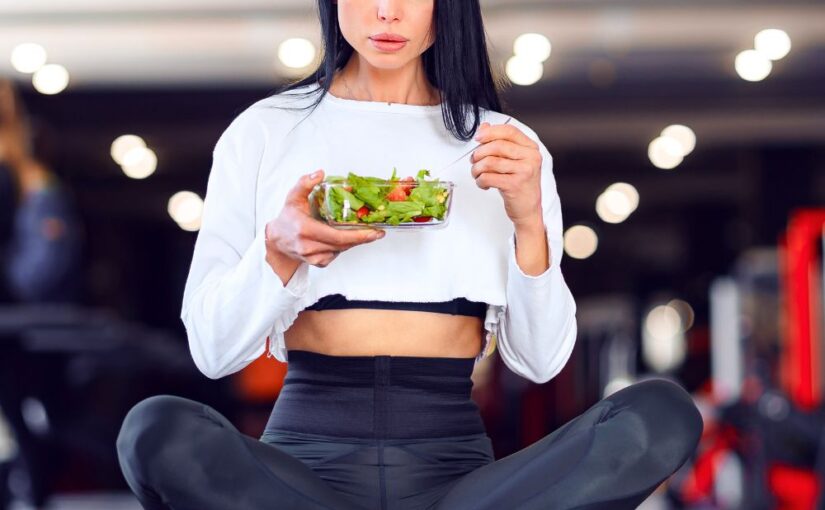Many people wonder whether exercising after dinner is beneficial or harmful. Timing your workouts can impact digestion, sleep, and overall results—but what about evening activity? In this article, we’ll answer the question: Best Exercise After Dinner: What Are the Benefits? We’ll explore the best types of post-meal workouts, why they matter, and how to use them to support your health goals.
Is It Good to Exercise After Dinner?
Yes, exercising after dinner can be good for your health—if done correctly. Light to moderate post-meal activity can improve digestion, regulate blood sugar, and support weight management. However, high-intensity workouts immediately after a heavy meal might cause discomfort or indigestion.
Best Exercise After Dinner: Low-Impact Options That Work
If you’re planning to move after your evening meal, the key is choosing exercises that are gentle on the stomach and easy to recover from. If you’ve ever asked, Best Exercise After Dinner: What Are the Benefits?, the following activities offer science-backed advantages without putting strain on your digestive system.
1. Walking
A 15–30 minute walk after dinner can aid digestion, reduce blood sugar spikes, and promote fat metabolism. It’s one of the simplest and most effective forms of post-meal movement.
2. Light Yoga or Stretching
Gentle yoga poses like twists, forward bends, and breathing exercises can relax the nervous system, ease bloating, and prepare the body for rest.
3. Low-Intensity Cycling
A slow, steady ride on a stationary or outdoor bike after dinner helps circulation and light calorie burn without stressing digestion.
4. Tai Chi or Mobility Work
These mindful movement practices improve flexibility and relaxation. They’re ideal for winding down without elevating heart rate too much.
Post-Dinner Exercise Comparison Chart
| Exercise Type | Intensity | Wait Time After Meal | Primary Benefit | Best For |
|---|
| Walking | Low | 15–30 min | Helps digestion, blood sugar | All levels |
| Light Yoga | Low | 15–30 min | Relaxation, reduces bloating | Beginners, stress relief |
| Cycling (light) | Low-Moderate | 30–45 min | Calorie burn, circulation | Weight management |
| Tai Chi | Low | 20–30 min | Mindfulness, balance | Older adults, beginners |
| HIIT or Lifting | High | 60–90 min | Performance, muscle gain | Advanced, not ideal post-meal |
Key Benefits of Exercising After Dinner
Improved Digestion
Light movement encourages blood flow to the digestive tract and helps your body process food more efficiently.
Better Blood Sugar Control
Post-meal activity, especially walking, can help lower blood glucose levels—especially helpful for those with insulin resistance or Type 2 diabetes.
Weight Management
Evening exercise can help burn off excess calories from dinner and contribute to a daily calorie deficit.
Reduced Bloating or Discomfort
Movement may prevent feelings of heaviness or sluggishness that often follow large meals.
Stress Relief and Sleep Support
Gentle activity can help reduce stress and support better sleep—especially if you avoid intense workouts late at night.
What to Avoid After Dinner
- High-Intensity Training (HIIT)
Doing intense workouts too soon after eating can lead to cramps, nausea, or indigestion. Wait at least 90 minutes if planning high-effort sessions. - Heavy Weightlifting
Like HIIT, heavy lifting right after a meal diverts blood away from digestion, which can leave you feeling uncomfortable or bloated. - Lying Down Immediately
Avoid lying down or going to bed right after eating, as it may trigger acid reflux and slow digestion.
When Should You Exercise After Dinner?
Ideally, wait 20 to 45 minutes after your meal before engaging in any physical activity. This gives your body time to start digestion but still allows you to benefit from post-meal movement. If you’ve had a heavy or high-fat meal, consider waiting longer—up to 60–90 minutes.
Tips for Safe and Effective Post-Dinner Workouts
- Keep intensity low to moderate.
- Stay hydrated, especially if you consumed a salty or high-carb meal.
- Wear comfortable clothing that doesn’t constrict your stomach.
- Listen to your body—if you’re too full or tired, opt for light stretching or a shorter walk.
- Be consistent: Evening routines can help build long-term healthy habits.
Conclusion: Best Exercise After Dinner—What Are the Benefits?
So, Best Exercise After Dinner: What Are the Benefits? The answer depends on your goals, but for most people, the advantages are clear. A walk, light cycling, or gentle yoga after dinner can support digestion, stabilize blood sugar, and promote relaxation. Just avoid intense training too soon after eating, and allow enough time for your body to begin digestion.
If you’re looking to improve your health with minimal disruption to your routine, incorporating the best exercise after dinner may be one of the simplest changes you can make.
Frequently Asked Questions (FAQ)
It’s best to wait 20–45 minutes after eating before doing light exercise. This gives your body time to begin digestion and reduces the risk of discomfort.
Walking is the most recommended post-dinner exercise. It’s low impact, supports digestion, and helps regulate blood sugar. Gentle yoga or light cycling are also effective.
Yes, consistent light activity after dinner can contribute to a daily calorie deficit and support weight loss, especially when combined with a balanced diet.
Low- to moderate-intensity exercise may improve sleep quality. However, intense workouts too late in the evening may raise your heart rate and delay sleep onset.
Avoid lying down, going to bed, or doing high-intensity workouts immediately after a meal, as these can interfere with digestion and cause discomfort.
Helpful Accessories for Post-Dinner Exercise
If you’re looking to incorporate light movement into your evening routine, the following types of equipment can support safe and effective post-dinner workouts. Each option is suitable for low-impact activities that align with the goals of improved digestion, relaxation, or weight management.
Treadmills
Compact or foldable treadmills can make walking after dinner more convenient, especially when outdoor walking isn’t practical. Look for models with low-speed settings and quiet operation to keep your workouts gentle and home-friendly.
Yoga Mats
A supportive, non-slip yoga mat is ideal for stretching, mobility work, or gentle yoga routines. Mats with extra cushioning may be more comfortable for evening sessions focused on relaxation and digestion.
Stationary Bikes
Low-resistance stationary bikes allow for light cycling, which can support circulation and calorie burn after a meal. Choose a bike with adjustable settings so you can control the intensity and maintain comfort during your session.
Affiliate Disclaimer: The above links are affiliate links. If you choose to make a purchase through these links, we may earn a small commission at no additional cost to you.

